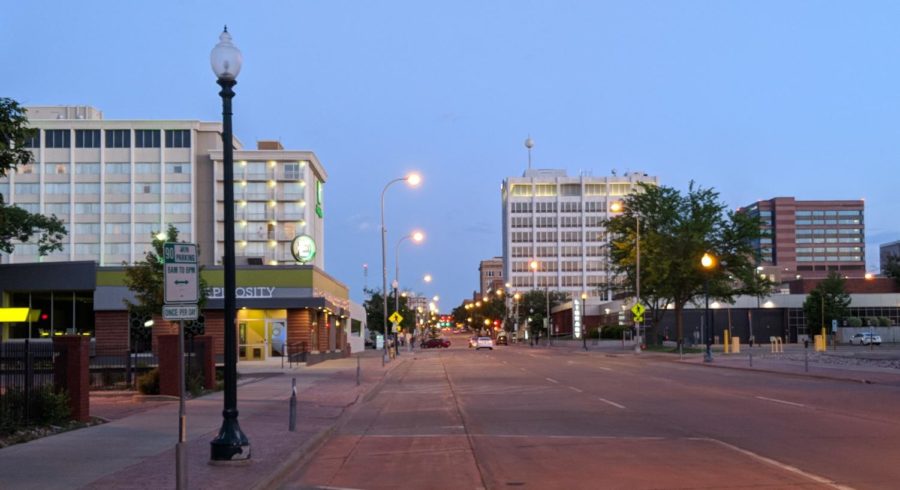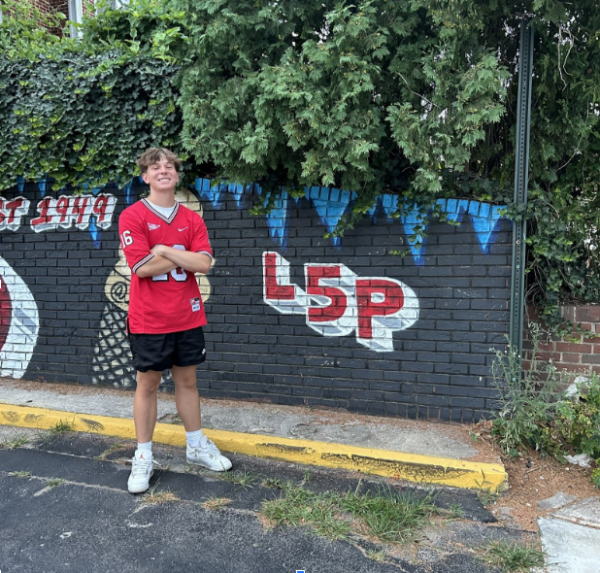Sioux Falls’ future is in its past
Downtown Sioux Falls, South Dakota looking South on Main Ave. on June 6, 2018.
October 22, 2018
Sioux Falls, one of the fastest growing cities in the country, clearly has a lot to learn from larger cities.
There are several ways to construct buildings in Sioux Falls’ future. Each method has its own advantages and drawbacks. In any case, the goal of urban design should be to minimize pollution and automobile accident rates. According to the NHTSA, “34,000 people in the U.S. die each year” from flawed urban design. How do we design a city that works for both pedestrians and cars?
The key to having a thriving community is to incentivize people to live near the center. What we see currently is a city that is ultimately divided. Residents of Sioux Falls live in either the relative center or the quiet, cornfield surrounded suburbs. There are several construction projects around nearly deserted places, such as McGovern Middle School and the Dawley Farm Village. Why build here? There is no point. The city government needs to incentivize construction near the city center.
Currently, a plurality of the action is still in the middle of the city. But this could soon change. Big construction projects where nobody lives only end up in forests of concrete. As a general rule, the further away from downtown one gets, roads will get wider and there will be more concrete. A construction style like this is designed exclusively for cars. This disincentivizes pedestrian traffic and incentivizes car traffic. In addition to noise pollution, cars create air pollution, which contributes to global climate change.
If urban sprawl is so bad, how do we incentivize people to walk or build in the center? The solution is simple. We simply need to build more in the center. Construction projects could be directed toward downtown. The city could replace any unused lots with a whole new mall or two. Both major malls are currently in the southwest, so Sioux Falls could use another. However, the infrastructure benefits are not the only positive result of this. Building a new structure would be good for the economy, as it would create competition by eliminating corporate monopolies. In addition to this competition, there is much demand for stores like Trader Joe’s or IKEA to come to Sioux Falls. If a new store is built in the city center, the demand will be so high that economic growth would be inevitable.
There is already a centrist solution to the urban design problem in place. Property taxes are generally higher the further one lives from the center. Sioux Falls should model themselves after this type of idea. We could look to major cities with happy and productive citizens. What techniques are working there?
It seems that the more compact the city (and thus less spread out), the safer the city. Cities like Stockholm and Tokyo, both settled well before cars were very compact. Interestingly, as the WRI Ross Center says, they have “the lowest traffic fatality rates in the world, at 1.5 deaths per 100,000 residents.” In comparison, more modern and less dense cities like Atlanta experience some of the highest, at nine deaths per 100,000 residents.
According to the World Health Organization, “more than 270,000 pedestrians lose their lives each year” on the world’s roads. To state it succinctly, the more space they have, the less likely a fatality is. If cities truly want to reduce traffic fatalities, they just need to make dedicated pedestrian and biking zones on sidewalks. This is yet another way to incentivize pedestrian movement, decreasing pollution. However, if all else fails, each city should have a heavily invested in public transportation system, while focusing on building upward and avoiding ranch style homes that only increase land prices.
What is a model for such an idealist vision? We see cities built for pedestrians all across the world. In any place settled before cars, there are no concrete forests. Everything is compact and efficiently constructed, aimed at the pedestrian. In fact, even in our own downtown, we see reflections of these principles. Because they have employed pedestrian friendly tactics, cities like Boston and New York are iconic.
However, Sioux Falls does not need to model them. Sioux Falls already has everything it needs for future urban design. We can see it in our own downtown. Looking to the future, in terms of city expansion, all Sioux Falls really needs to do is look at the past.









